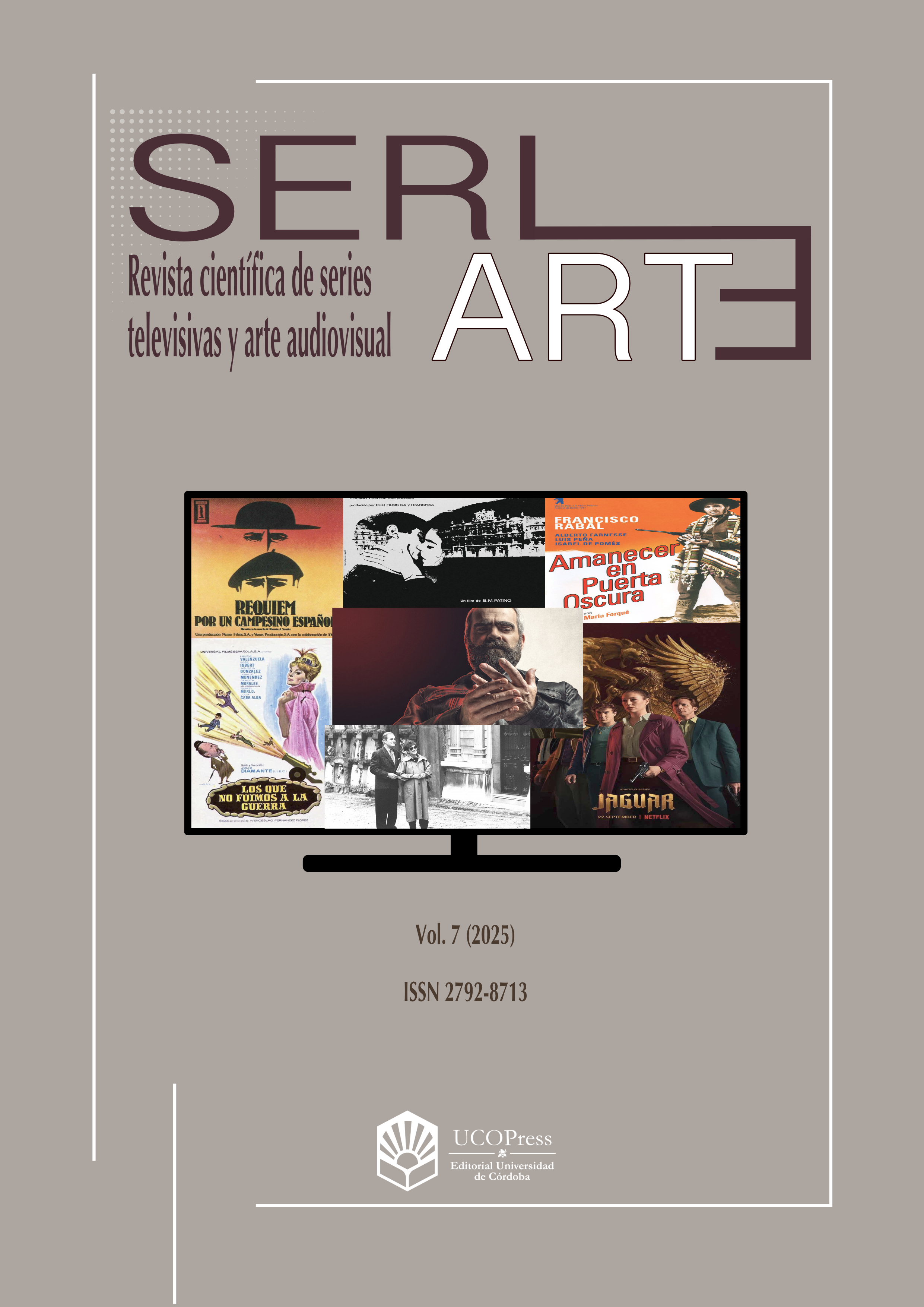Epistolary Writing and Internal Focalization in Nueve cartas a Berta (Basilio Martín Patino, 1966)
Main Article Content
Abstract
Basilio Martín Patino's film Nueve cartas a Berta (1966) proposes a complex dialectic between the internal focalization provided by the protagonist’s letters and the external focalization supported by the images, which are not limited to illustrating the content of the letters, but comment on, expand upon and even contradict what is stated in the voice-over that reports on the content of the epistles. The writing of Lorenzo, the protagonist of the film, is presented as a problematic way of exposing the suffocating Spanish reality of the sixties, within the current of renewal of the cinematographic language that came with the appearance, with other movements such as the French Nouvelle Vague or the British Free Cinema, of the New Spanish Cinema, in view of overcoming above all the neorealism cinema of the previous decade and to the limitation that supposed making the story depend on the perspective of the main character.
Downloads
Publication Facts
Reviewer profiles N/A
Author statements
Indexed in
- Publisher
- Ucopress. Cordoba University Press
Article Details

This work is licensed under a Creative Commons Attribution-NonCommercial-NoDerivatives 4.0 International License.
References
BAZIN, André (1999), «Ontología de la imagen fotográfica», ¿Qué es el cine?, Madrid: Rialp, pp. 23-30.
BILBATÚA, Miguel y RODRÍGUEZ SANZ, Carlos (1966), «Conversación con Basilio Martín Patino», Nuestro Cine, vol. 52, n.º 2, pp. 8-21.
CASTRO DE PAZ, José Luis (2003), «Nueve cartas a Berta (Basilio Martín Patino, 1965). Sin remedios, sin facturas…», en F. HEREDERO, Carlos y MONTERDE, José Enrique (eds.), Los «nuevos cines» en España. Ilusiones y desencantos de los años sesenta, Valencia: Institut Valencià de Cinematografia Ricardo Muñoz Suay, pp. 419-422.
DE JULIÁN, Óscar (2002), De Salamanca a ninguna parte. Diálogos sobre el Nuevo Cine Español, Valladolid: Junta de Castilla y León.
FAULKNER, Sally (2006), «Identity and Nationality in Basilio Martín Patino’s Nueve cartas a Berta (1965)», Bulletin of Spanish Studies, vol. LXXXIII, n.º 3, pp. 409-423. https://doi.org/10.1080/147538206000346261 DOI: https://doi.org/10.1080/147538206000346261
GARCÍA JIMÉNEZ, Pilar (2020), «De Nueve cartas a Berta a la trilogía de “los regresos”», en Ignacio FRANCIA y Alberto MARTÍN EXPÓSITO, eds., Basilio Martín Patino. Pasión por el juego, Salamanca: Universidad de Salamanca, pp. 75-110.
GONZÁLEZ GARCÍA, Fernando (2020), «Exilios, retornos, distancias», en Ignacio FRANCIA y Alberto MARTÍN EXPÓSITO, eds., Basilio Martín Patino. Pasión por el juego, Salamanca: Universidad de Salamanca, pp. 61-73.
GUILLÉN, Claudio (1998), «La escritura feliz: literatura y epistolaridad», Múltiples moradas: Ensayo de Literatura Comparada. Barcelona: Tusquets, pp. 177-233.
KELLER, Patricia (2013), «Letters from The City: Writing Boundaries in Nueve cartas a Berta (1965)», Bulletin of Hispanic Studies, vol. 90, n.º 8, pp. 945-964. https://doi.org/10.3828/bhs.2013.57 DOI: https://doi.org/10.3828/bhs.2013.57
MARTIALAY, Félix y MARINERO, Manuel (1966), «Palabras con Basilio Martín Patino», Film Ideal, 193, pp. 373-381.
MARTÍN PATINO, Basilio (1968), Nueve cartas a Berta, Madrid: Ciencia Nueva.
MARTÍN PATINO, Basilio (2020), «Nueve cartas a Berta explicada por su director», en Ignacio FRANCIA y Alberto MARTÍN EXPÓSITO, eds., Basilio Martín Patino. Pasión por el juego, Salamanca: Universidad de Salamanca, pp. 439-440.
RIAMBAU, Esteve (2008), «Nueve cartas a Berta: de la modernidad y otras soledades», en Carlos MARTÍN, coord., En esto consistían los paraísos: Aproximaciones a Basilio Martín Patino, Granada: Diputación de Granada, pp. 20-33.






